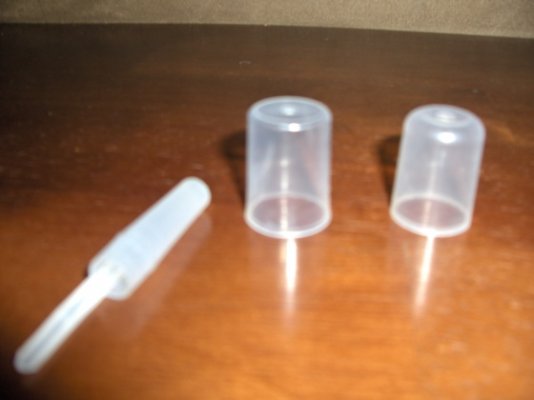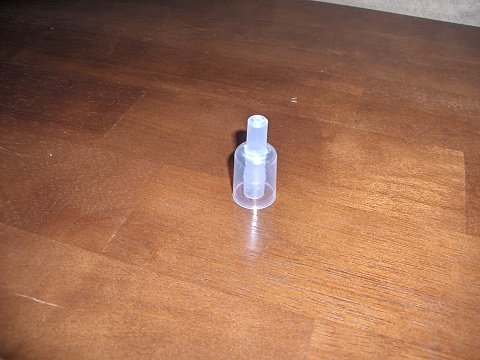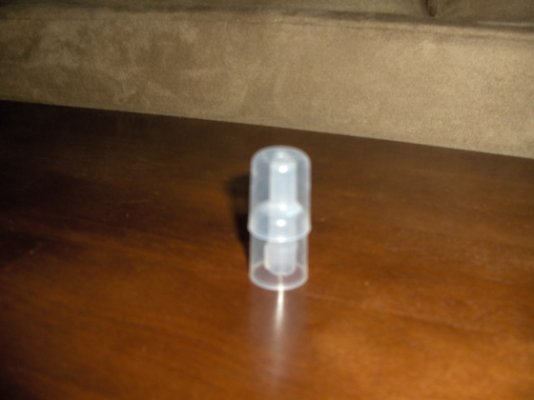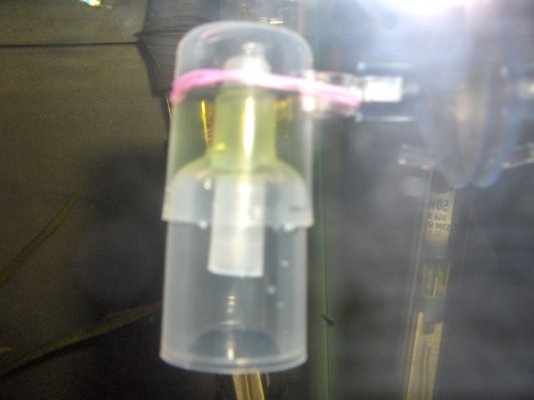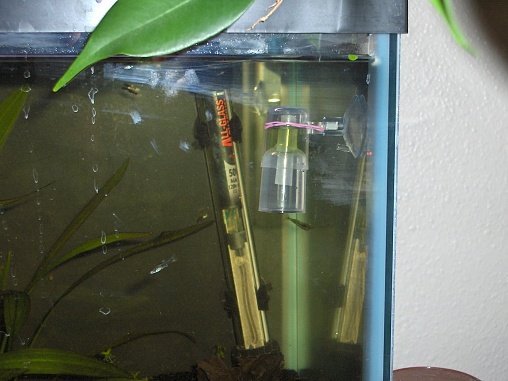Ok i was trying to figure out how to check my CO2 levels without buying one of the AGA glass checkers. ANd this is what i came up with the total cost is free.
What you need is two lids off of your wife's pump action hairspray bottles the more plyable the lids are the better. and the cap from a bic pen (bic is important beause of the taper and material its made of.
Process:
take one of the lids and drill a hole in the top that is slightlysmaller than the width of your pen lid.
Trim the large portion of the pen lid off using a razor blad.
Push pen lid through hole in first lid.
put in your 4dKh solution and PH solution into the other non drilled lid. Keeping it upside down pressure fit the other drilled lid into the bottom of the undrilled lid. Turn over and BAM you got your self a drop checker here are the pics.
I am going to test it for a week and get back to everyone just shoot me a question if you need help
What you need is two lids off of your wife's pump action hairspray bottles the more plyable the lids are the better. and the cap from a bic pen (bic is important beause of the taper and material its made of.
Process:
take one of the lids and drill a hole in the top that is slightlysmaller than the width of your pen lid.
Trim the large portion of the pen lid off using a razor blad.
Push pen lid through hole in first lid.
put in your 4dKh solution and PH solution into the other non drilled lid. Keeping it upside down pressure fit the other drilled lid into the bottom of the undrilled lid. Turn over and BAM you got your self a drop checker here are the pics.
I am going to test it for a week and get back to everyone just shoot me a question if you need help

